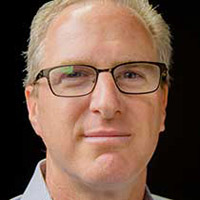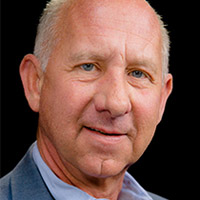Deductions Available to Collectors at Charity Auctions
Deductions Available to Collectors at Charity Auctions
Posted: 7/25/11
Collectors who want to make donations may consider donating artwork and collectibles to charity auctions. If this is something you are thinking about and would like to take full tax benefits, the following tips may help.
Making Donations to Charitable Organization Auctions:
1. Make sure you are donating to a qualified charity.
The Internal Revenue Service (IRS) maintains a list of charities where donations can qualify for tax deductions. Most churches and government organizations are qualified, but all other charities have to apply to the IRS to be qualified as charitable organizations. To confirm you are donating to a qualified charity, either ask the charity directly or find out if they appear in IRS Publication 78, which contains a list of “most qualified charitable organizations.”
2. Have your collectibles appraised?
With respect to donation of valuable collectibles (e.g., over $5,000), getting an appraisal from a qualified appraiser is an important step in the donation process, even though you may or may not be required to attach the appraisal to your tax return (appraisal fees exceeding 2 percent of your Adjusted Gross Income or AGI are tax-deductible). The appraisal must be made no earlier than 60 days before the date you contribute the property. Additionally, you must receive the appraisal before the due date (including extensions) of the return on which you first claim a deduction for the property.
If your noncash contribution is over $500, you must attach Form 8283 to your tax return. If your artwork or collectible is worth more than $5,000, you are not required to attach the appraisal to your tax return (just keep the record yourself). If you deduct $500,000 or more for an item or group of similar items, you will need to attach the qualified appraisal to your tax return. Special filing requirements for art donations include attaching a copy of the signed appraisal to Form 8283 if your total deduction for art is $20,000 or more. In addition, a photograph may be required for individual objects valued at $20,000 or more.
3. Check to see if you will receive tax benefits from your donation.
Your charitable deduction is limited to 30 percent of your AGI if the collectibles are capital gain property and donated to a publicly supported charity. If the donation is to a private foundation, the limit is 20 percent of AGI. The unused charitable deduction can be carried forward to future years. However, you must use it within five years; otherwise, you will lose the ability to claim the deduction.
The law limits a donor’s charitable deduction to the donor’s tax basis in the contributed property and does not permit the donor to claim a fair market value charitable deduction for the contribution if the charity puts the donated property to an unrelated use.
Moreover, special certification rules apply to the donation of capital gain property over $5,000:
If the charity sells/disposes the property during the year you donated, your deduction is limited to your cost basis unless the organization provides a written statement (e.g., Form 8282) that either certifies its use of the property was substantial and related to the organization’s purpose or certifies its intended use of the property became impossible. A copy of Form 8282 should be provided to you.
You must recapture part of your original deduction in the year of sale and report as ordinary income the excess of the deduction claimed over your basis at the time of contribution if the following conditions are met:
Your charitable deduction is more than your basis in the property,
The charity sells/disposes the property after the year of contribution but within three years of contribution, and
The charity does not provide the IRS and you with the required certification.
If you are donating works of art or other collectibles to a charitable auction, make sure to consult with a tax professional so you can receive tax benefits for your donations.
For more information on auctions see Auction News Network.
Sources:
[1] Publication 529 Miscellaneous Deductions. IRS. 27 June 2011. Web. 2010. http://www.irs.gov/pub/irs-pdf/p529.pdf.
[2] Section B: Appraisal Requirements. Instructions for Form 8283. IRS. 28 June 2011. Web. http://www.irs.gov/pub/irs-pdf/i8283.pdf.
[3] Publication 561. Deductions of more than $5,000. http://www.irs.gov/publications/p561/ar02.html#d0e1545.
[4] Section B: Art valued at $20,000 or more. Instructions for Form 8283. IRS. 28 June 2011. Web. http://www.irs.gov/pub/irs-pdf/i8283.pdf.
[5] Section B: Deduction of more then $500,000. Instructions for Form 8283. IRS. 07 July 2011. Web. http://www.irs.gov/pub/irs-pdf/i8283.pdf.
[6] Form 8282. Irs.gov. IRS. Web. 28 June 2011.
http://www.irs.gov/pub/irs-pdf/f8282.pdf.
—————————————————————————————————————————————————————————————————————
We hope you found this article about “Deductions Available to Collectors at Charity Auctions” helpful. If you have questions or need expert tax or family office advice that’s refreshingly objective (we never sell investments), please contact us or visit our Family office page or our website at www.GROCO.com. Unfortunately, we no longer give advice to other tax professionals gratis.
To receive our free newsletter, contact us here.
Subscribe our YouTube Channel for more updates.

Alan Olsen, is the Host of the American Dreams Show and the Managing Partner of GROCO.com. GROCO is a premier family office and tax advisory firm located in the San Francisco Bay area serving clients all over the world.
Alan L. Olsen, CPA, Wikipedia Bio

GROCO.com is a proud sponsor of The American Dreams Show.

The American Dreams show was the brainchild of Alan Olsen, CPA, MBA. It was originally created to fill a specific need; often inexperienced entrepreneurs lacked basic information about raising capital and how to successfully start a business.
Alan sincerely wanted to respond to the many requests from aspiring entrepreneurs asking for the information and introductions they needed. But he had to find a way to help in which his venture capital clients and friends would not mind.
The American Dreams show became the solution, first as a radio show and now with YouTube videos as well. Always respectful of interview guest’s time, he’s able to give access to individuals information and inspiration previously inaccessible to the first-time entrepreneurs who need it most.
They can listen to venture capitalists and successful business people explain first-hand, how they got to where they are, how to start a company, how to overcome challenges, how they see the future evolving, opportunities, work-life balance and so much more..
American Dreams discusses many topics from some of the world’s most successful individuals about their secrets to life’s success. Topics from guest have included:
Creating purpose in life / Building a foundation for their life / Solving problems / Finding fulfillment through philanthropy and service / Becoming self-reliant / Enhancing effective leadership / Balancing family and work…

MyPaths.com (Also sponsored by GROCO) provides free access to content and world-class entrepreneurs, influencers and thought leaders’ personal success stories. To help you find your path in life to true, sustainable success & happiness. It’s mission statement:
In an increasingly complex and difficult world, we hope to help you find your personal path in life and build a strong foundation by learning how others found success and happiness. True and sustainable success and happiness are different for each one of us but possible, often despite significant challenges.
Our mission at MyPaths.com is to provide resources and firsthand accounts of how others found their paths in life, so you can do the same.
Why Are True Leaders Rare? | Jonathan Coslet
About Jonathan Coslet Jonathan Coslet has been with TPG Capital since it started in 1993. Currently he is the firm’s Chief Investment Officer and serves on TPG’s Executive Committee. Jonathan graduated Valedictorian from the Wharton School of Business where he received his Bachelor’s of Science in Economics and Finance. He received his MBA from…
Silicon Valley’s Bubble- What Happens When It Bursts? | Montgomery Kersten
About Montgomery (Monty) Kersten Montgomery Kersten serves development-stage companies as an independent board member, investor and advisor. Mr. Kersten was the co-founder & CEO of VitalSigns Software (later acquired), and serves as the independent board member of Silicon Valley private companies. He has worked for 35 years as an executive in sales, marketing, business…
Scott McNealy- What Projects I’m Currently Working On
About Scott McNealy- Silicon Valley Icon Scott McNealy co-founded Sun Microsystems, Inc.in 1982, serving as Chief Executive Officer and Board Chairman for over 22 years. During his tenure, McNealy transformed Sun from a Silicon Valley start-up to a leading provider of network computing. In October 2011, McNealy announced his next venture, Wayin. Wayin offers…
Philanthropy is Love | Pamela Hawley
Transcript, Philanthropy is Love | Pamela Hawley: Pamela Hawley: Philanthropy. I think the way people look at it today isn’t really correct. They look at it as giving of money. But really what it is is people, it’s the love of people. It’s all about people. It’s about the love of humanity. So what I…




